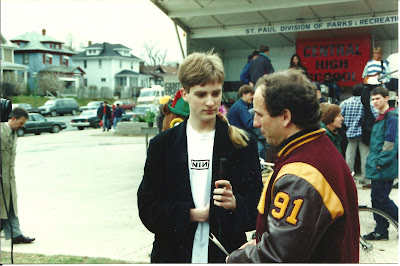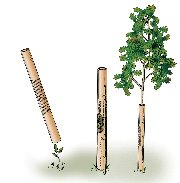I can't help but comment on the disheartening story first published in last Friday's Minneapolis
Star-Tribune. On October 20 someone stole several plants of a very promising new grape variety. The first question is, of course, who? Followed closely by, why? Every variety introduced by the University of Minnesota represents the culmination of years of work, hundreds of crosses, and untold hours spent in evaluation.
To understand the importance of what they do, you have to go back in time. According to
Minnesota Harvest, "In 1860, Horace Greeley told his audience,
"Never move to Minnesota...you can't grow apples there!" This was the same Horace Greeley who was responsible for the grand command of the century,
"Go West, Young Man!" For Minnesota, a pioneer land only two years into statehood, such a reputation was sure to be detrimental to efforts aimed at attracting westward-moving Easterners to settle here.
"His apple statement was true at the time. But even as Greeley spoke, a fruit-loving Minnesotan was planting and evaluating apple trees started with seeds collected from northern sources, even some from Siberia."
Somehow the fact that in order to grow apple trees in Minnesota you needed to collect seed from Siberia never made it into Minnesota's tourism brochures (Minnesota: It's like Siberia, but closer!). While Greely was disparaging Minnesota's apple growing capacity, Peter Gideon was busy breeding cold hardy applies. The name Peter apparently is an important prerequisite for skilled plant breeders in Minnesota: Peter Moe is the operations director at the University of Minnesota Arboretum, and Peter Hemstad has been responsible for the launch of many important new varieties.
The UofM launched the amazing Honey Crisp apple, which has generated $8 million in royalties for the state. Whether or not the stolen variety would have become the Honey Crisp of the (fast growing) Midwest vineyard industry we might never know - but hopefully the plant material will be recovered and we'll find out. We do know that the UofM has already introduced several important grapevine varieties including Frontenac and Marquette which are used by folks like our friends at Cannon River Winery to produce home-grown Minnesota wines that would have impressed even Mr. Horace Greeley!
We wish the University of Minnesota the best of luck in recovering the stolen plant material (and that it is in a condition that will allow for its regeneration), and in finding effective ways to prevent similar losses in the future.
(Click image to enlarge) Frontenac grapevines planted in spring, 2009 at Cannon Valley Vineyards with Plantra Grow Tubes. Planted in May, photo taken June 24.
Frontenac grapevines planted in spring, 2009 at Cannon Valley Vineyards with Plantra Grow Tubes. Planted in May, photo taken June 24.

 We stopped at the gateway arch to take pictures inside and out. While walking around the park under the arch, I noticed a clump of ash that could provide some welcome shade. What I found was a whole stand of zombie trees. The living dead.
We stopped at the gateway arch to take pictures inside and out. While walking around the park under the arch, I noticed a clump of ash that could provide some welcome shade. What I found was a whole stand of zombie trees. The living dead.

















